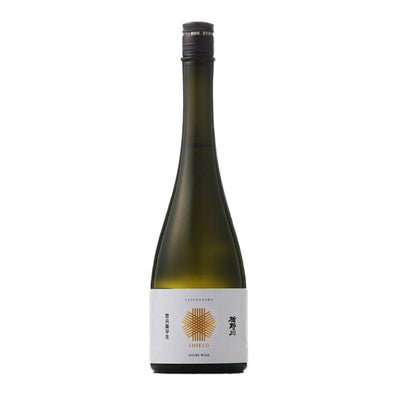

"EXTREAME"
In recent years, along with the development of Kobo (yeast), each prefecture has been competing with each other to develop sake rice. I found data that shows that the Shonai region of Yamagata Prefecture, where TATENOKAWA is located, has been very active in a variety of rice development. The data I received from the Agricultural Experiment Station in the Fujishima area of Tsuruoka City showed that individual farmers took the initiative in improving rice varieties and developing new varieties, which is unthinkable nowadays. I can't help but respect this fact. I was not aware of this fact even though I am in the business of sake, a business that uses several hundred tons of rice as raw material annually. This incident made me decide that as a sake brewery in the Shonai, a rice-producing area, we must pass on the history and the great achievements of our predecessors to future generations.
The development of new sake rice varieties is also important, but the old sake rice varieties that were the source of these rice varieties should be preserved as well. With this in my mind, I began searching for a way to revive local rice varieties in the fall of 2017. Kamenoo, which originated in the Shonai, is a sake rice with a long history.
Many breweries, including the KOIKAWA Sake Brewery in the same town, are trying to revive this rice variety, so we searched for a different variety. The result was "Soube Wase," the parent rice of "Kamenoo”.
We obtained 1.9 kg of Soube Wase seeds left over from the aforementioned agricultural experiment station, and approached Mr. Takashi Shoji, a local contracted farmer, about growing it. At first, he was not enthusiastic about the project, but I tried desperately to persuade him, and in the spring of 2018, we were able to start the first rice planting. Starting from a small area of 0.5 hectares. The purpose of the first year's cultivation was to test the characteristics of the variety, but also to prepare the seeds for full-scale cultivation the following year.
Because it was an old variety, the ears of rice were long and the cultivation was difficult. I thought it was no surprise that there were no farmers who wanted to grow it, since it would probably die before the harvest, just like Kamenoo. No wonder no farmers wanted to grow it. It was a variety that should have disappeared. All the newer varieties have been bred to have shorter ears of rice, which makes it easier to harvest with a combine harvester. If not, no one would try to grow the troublesome sake rice. In the spring of 2019, we planted 1.2 hectares of Soube Wase with one more contract farmer. Finally, we will be brewing that rice in our 2019 BY production.
Our plan for 2019BY production included brewing not only the parent Soubei Wase, but also the child Kamenoo sake. Sake brewed with these two types of rice was released as a new series of sake called "Shield" by TATENOKAWA. The first series, "Shield Kamenoo", was released in March 2020, and the second series, "Shield Soube Wase", was released in October 2020.
The rice we have today, and the sake we have made. We hope that you will take the time to taste them, remembering the ancestors who have built the genealogy of this rice, as if you are following the path of history.
Sato Jumpei(6th Generation Brewer)































